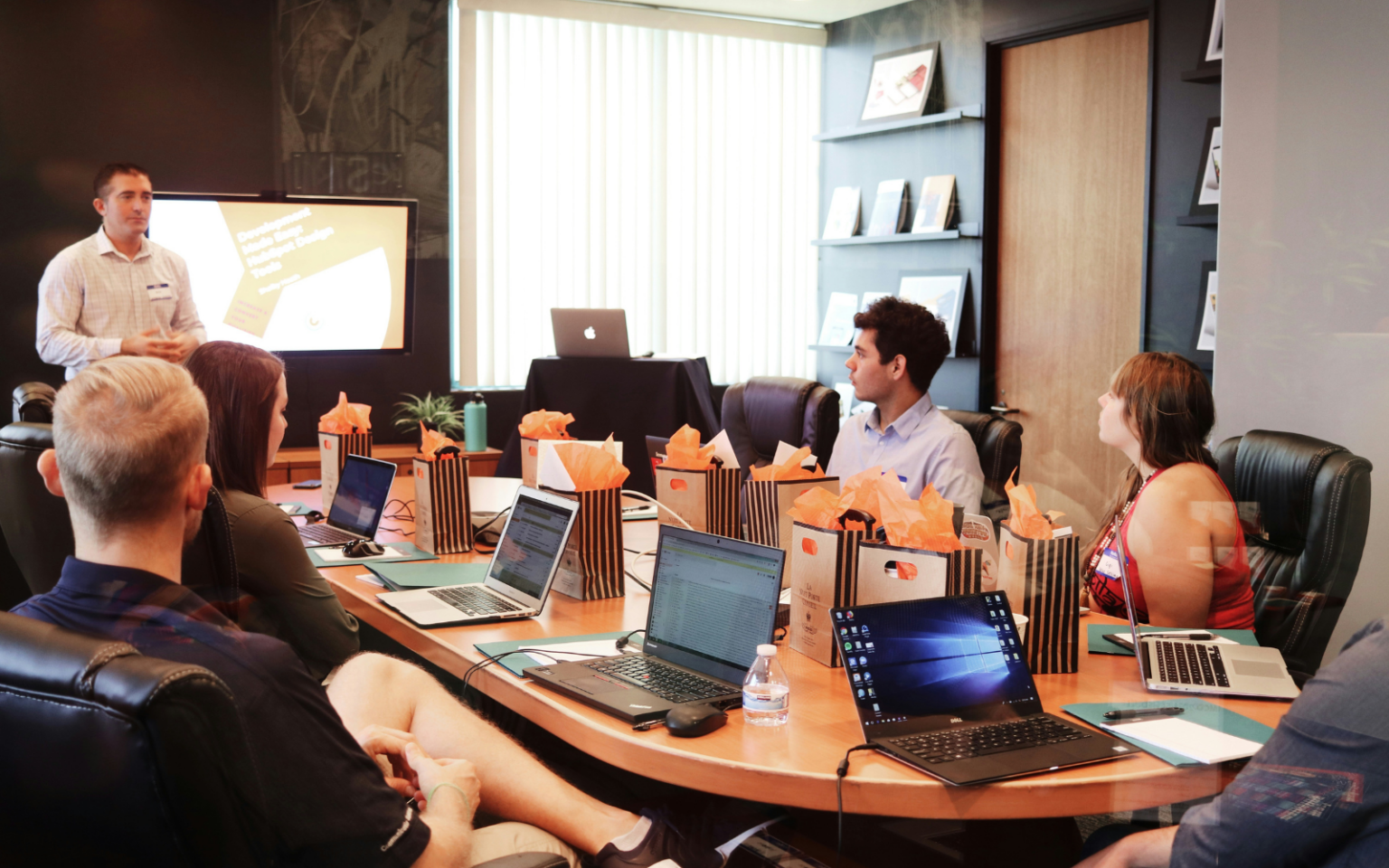6 Workforce HR Buzzwords To Be Aware Of In 2025

Being in IT recruitment means that I’m always tuned in to the latest trends in workplace culture, hiring practices, and corporate jargon. Every year, new HR buzzwords emerge that reflect the evolving dynamics between employers and employees. Here are six HR buzzwords that I anticipate will dominate conversations in 2025.
Revenge Quitting
Farewell ‘quiet quitting’
With a more uncertain outlook for jobs meaning fewer workers leaving their roles, quiet quitting dominated the HR buzzwords of 2023/24. The consequences of this workforce trend were significant; with the costs of quiet quitting to businesses being comparable with actual exiting employees.
Hello ‘revenge quitting’
And yet now we have a new trend taking resignations to a whole new level – differing from quiet quitting where the employee stayed in the role but gave the bare minimum in terms of effort and productivity, revenge quitting involves an employee deciding to leave their job, and ensuring their departure is as vocal and disruptive as possible. Whether through social media callouts, public complaints, or strategic timing to cause maximum inconvenience, this trend is a form of protest against what they feel is poor workplace treatment.
Recent Glassdoor research into 2025 worklife trends suggested that a “wave of revenge quitting is on the horizon”. Furthermore, survey results from Software Finder suggest that employees who plan to ‘revenge quit’ have, on average, been wanting to exit their jobs for 13+ months.
Fundamentally, revenge quitting is about the employee having a sense of power over the employer and taking those frustrations out in ways they can control. The timeline for the rise of revenge quitting aligns perfectly with quiet quitters who have wanted to leave their roles for 1-2 years and have ultimately had enough.
Of course, statistics suggest that the number of people who have or intend to revenge quit is a tiny percentage of the UK workforce, however, employers should take this recent trend seriously… it’s just a HR buzzword until ‘revenge’ goes too far. Recent cases included the British Museum, where a former IT contractor, who had been let go the previous week, allegedly entered the museum and interfered with multiple technologies and systems before being stopped.
Corporate Catfishing
Similar to personal catfishing, which refers to the practice of using a fake identity to pretend to be someone else, corporate catfishing is a deceptive practice used to mislead job seekers with false information and underhand tactics in order to attract them into employment.
It’s a growing issue in recruitment, with many employers wanting to benefit from talent attraction through certain benefits like flexible working, but being unwilling to accommodate them in reality. There is a worry that with new Employment Law regulations promising ‘day 1’ rights, it’s likely cases of ‘corporate catfishing’ will increase. All employees will have the right to request flexible working from day one, however, employers only have to be ‘technically’ open to it, the reality is a whole other ball game!
The ‘Misrepresentation in Hiring Practices Report’ by Resume Genius revealed how 70% of respondents from a survey pool of 600+ hiring managers, admitted to lying to job seekers during the recruitment process. The majority of respondents indicated the reasons for this included to: ‘fulfil immediate hiring needs’, ‘protect sensitive company information’, ‘avoid giving negative feedback’ and ‘prevent negative reviews’. Remarkably, 35% of those respondents said they lied to job seekers on a regular basis.
However, job seekers are becoming increasingly savvy at spotting these inconsistencies and will be quick to call out the employer personally or even publicly. A Muse Shift Shock Survey revealed how 80% of employees said it is acceptable to leave a new role within 6 months if it does not live up to expectations.
With many young people starting to enter the workforce, who studied remotely during the pandemic and who want flexibility in the workplace too, colliding with a declining remote and hybrid working trend, a perfect storm is brewing that both employees and employers will have to navigate.
Anti-Perks
On the surface, anti-perks sound like great benefits, but in practice, they often become burdensome or have hidden costs for employees instead of giving genuine value. They can disguise problems in the workplace and are stand-ins for more consequential and worthwhile benefits.
Common anti-perks include:
- Unlimited annual leave allowance – which can cause employees to feel pressure not to take as much as they are legally entitled to
- Free meals, in-office gym facilities and laundry services – which can encourage employees to stay in the office and work longer hours
- Company social events – which can cause confusion and anxiety, obscuring the distinction between professional and personal time
Outwardly, anti-perks can seem immensely giving and generous, yet they can imply expectations and manipulate employees into working longer hours, being available during their personal time and sacrificing work-life balance.
Employees are becoming more critical of perks that don’t truly serve and empower power, which is why this HR buzzword will likely be a topic of conversation in 2025.
Reverse Mentoring
Traditionally, mentoring has been a top-down process, but reverse mentoring flips this dynamic. In this model, junior employees take on the role of the mentor. This cross-generational knowledge sharing approach has become increasingly popular over the past 5 years and is only expected to gain momentum with the ever-evolving digitally-powered business landscape. With formidable companies like Accenture, Target, Cisco, UnitedHealthcare, Fidelity, and Estée Lauder all reportedly taking up this new technique, companies of all sizes are beginning to take heed of this HR buzzword and the valuable insights it can produce.
In particular, reverse mentoring has begun to gain attention because of these benefits:
- Bridging generational divides and increasing DEI– reverse mentoring gives more senior team members the opportunity to understand the perspectives and ideas of younger generations, who tend to be more technologically and digitally driven.
- Nurturing innovation and digital skills – reverse mentoring brings team members with differing ideas and skills together. With younger employees often having a stronger grasp of emerging technologies and trends, this kind of collaboration can create exciting ideas which help companies innovate and set themselves apart from their competitors.
- Employee recruitment and retention – reverse mentoring can foster and strengthen relationships, leading to more cohesive teams and workplaces where employees feel engaged and empowered.
Burnout Blocking
With scaled-back teams, limited salary increases and reduced benefits being expected in 2025 due to new legislation and unexpected tax hikes, many organisations are tightening the purse strings and are making workforce cuts they weren’t necessarily expecting to make. Many organisations are looking to protect the valuable assets they do have – their staff and their skillsets – by protecting their workforce from employee burnout.
In essence, this next HR buzzword ‘burnout blocking’ involves putting preventative measures in place, such as mandatory mental health days, workload assessments, and encouraging a healthier work-life balance before employees reach breaking point. Breathe HR research suggests that 65% of respondents didn’t take their full annual leave allowance for last year, so this is another area some organisations will look improve employee wellbeing by implementing systems and policies to encourage workers to take time away from work. So, this HR buzzword essentially encompasses organisations searching for and implementing methods and approaches that will look after the wellbeing of their workers, in order to protect company interests.
Micro-Retiring
Gone are the days when people worked for 40 years and then retired. Micro-retiring refers to taking multiple shorter career breaks throughout one’s working life, rather than saving all retirement time for later years. This could include taking sabbaticals, extended holidays, or part-time work at various stages.
This trend is growing in popularity among Gen Z and millennials, demonstrated by a poll by Santander which revealed that approximately three-quarters of Gen Z do not plan to work a 9-5 job for their rest of their career.
For many in the Gen Z and millennials generations, they see micro-retiring as a way to ultimately extend career longevity in a more sustainable way.
On the whole, these HR buzzwords demonstrate a changing dynamic in the workforce, with both more senior members of the workforce and Gen Z / millennials needing to make strives to work together and nurture this evolving landscape in order to thrive. As 2025 continues and both expected and turbulent factors come into play, it will be interesting to see which of these HR buzzwords are prioritised and which fall by the wayside.
VIQU is an award-winning IT recruitment agency. For tailored and specialist assistance in hiring great IT professionals in 2025, please get in touch with our team here.
Similar articles you might like...

AI In Software Development: How The Role Of Developers Will Change In The Future
AI in software development is increasing efficiencies and productivity making it the perfect tool to complement a developer's skillset.

Forgoing Using Contract Cloud Migration Specialists: Benefits Vs Drawbacks
Cloud migration specialists are vital professionals but tight budgets are making companies consider alternative ways to deliver projects.
Latest jobs
Full Stack Developer
 Glenrothes, United Kingdom
Glenrothes, United Kingdom
 £40k - 50k per year + Bonus
£40k - 50k per year + Bonus
Full Stack DeveloperSalary: £40,000 - £50,000 per annum plus bonusGlenrothes, Scotland (Full time on site)VIQU have partnered with a leading organisation who are looking to recruit a full stack developer join their development team. The...
Site Supervisor
 Stone, United Kingdom
Stone, United Kingdom
 Market related
Market related
Job Title: Site Supervisor Location: Stone (on-site)- must have full UK Driving License. Salary: market- relatedVIQU has partnered with a top engineering company seeking a Site Supervisor to create and manage project plans. The...
Site Manager - Nuclear Division
 Staffordshire, United Kingdom
Staffordshire, United Kingdom
 Competitive Salary
Competitive Salary
Site Manager - Nuclear Division - Competitive SalaryLocation: StaffordshireVIQU have partnered with a company that has been leading the charge in advanced system integration for decades. The Role:We're looking for an experienced Site Manager with strong...
Telephony Engineer
 Cardiff, United Kingdom
Cardiff, United Kingdom
 £35k - 45k per year
£35k - 45k per year
Telephony Engineer - 12 Month FTC – £35- £45,000 Location: Cardiff (Minimum 3 days on-site) Company: VIQU - Partnered with a Public Sector OrganisationVIQU is working with a Public Sector client to find an experienced...
Solution Architect
 London, United Kingdom
London, United Kingdom
 £650 - 750 per day + Inside IR35
£650 - 750 per day + Inside IR35
Solution Architect – Workplace Modernisation – 12 months ContractA Global Firm are at the start of a Workplace Modernisation programme of work and require a Solutions Architect to join the team and help design this...



